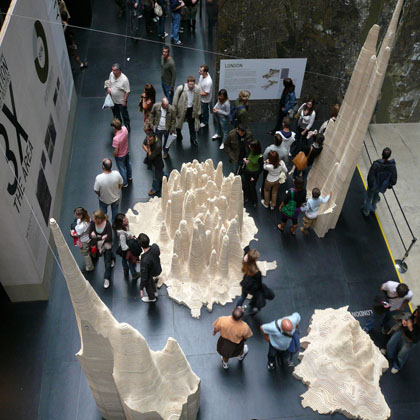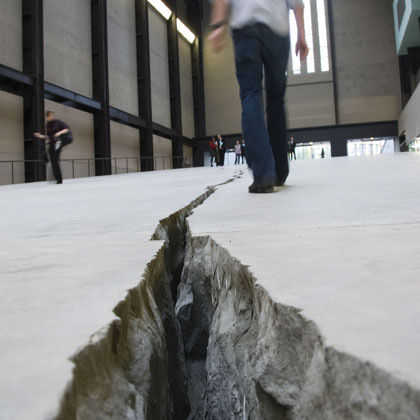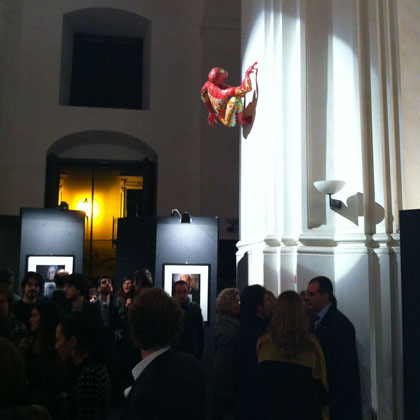
maurizio carta [ITA]
Re-think, Re-load, Re-cycle.
Designing cities in the metamorphosis age
We live in a world of cities, where more than half of the population lives and works in urban settlements, whether dense or sprawled, metropolitan or networked, expanding or shrinking. The city plays a major role in the Urban Age as habitat – the U.S. and Europe are close to 80% – not only as development growth machine driver of communities’ evolution and dynamism, but bearing the responsibility to generate innovative lifestyles, more sustainable smart and creative, and to be the reformer of its own development pattern. Cities continue to attract population – even more in times of crisis – especially from other cities, but they are also developing new ties with suburban and rural areas. Global capital flows still nourish their competitiveness, redevelopment and quality but require to be properly transformed into local resources. Dynamism had previously been too simplistically identified with the settlement of a creative class, the setting up of main events or with the establishment of magnets for transnational flows (the entrepreneurial city). Yet, further expanding the concept of urban development is necessary today. The real factors enabling urban identity, creativity and innovation to switch from the mere attraction of population and activities – a zero sum interurban competition – to be capable of generating new economies, nurturing a better quality of life and promoting civic virtue thus producing new forms of city need to be identified.

Now is the winter of our discontent made glorious summer by this sun of York. And all the clouds that lour'd upon our house in the deep bosom of the ocean buried. Now are our brows bound with victorious wreaths; our bruised arms hung up for monuments; our stern alarums changed to merry meetings, our dreadful marches to delightful measures.
[William Shakespeare]
New paradigms.
Six keys to rethink urban planning in the Twenty-first century
Regional planning and urbanism have evolved throughout the second decade of the Twenty-first century from land use regulation, to remarkable developments, in foreseeing future scenarios and negotiating development patterns. Moreover, the transition occurred during the global housing bubble, from ground rent to new social return despite the economic crisis and the changes undergone by the urban environment is worth remembering. The evolutionary trajectories – still imperfect, not always robust, and sometimes characterised by new rhetoric – require the rethinking of governance modalities, including planning and design of cities, territories and landscapes. Likewise, a paradigm shift is advisable, which addresses issues in a different way, dealing with the intense evolution of the context. The resulting framework is rather complex: whereas old paradigms return – even if modified –, new ones are emerging as avant-gardes of the future ones. We set out to put forward some new visions, avoiding "vision tunnel", but rather providing planning and urbanism images, fuelled by the multiple and proteiform nature of the city and by the need to interact in different ways with the spatial, social, cultural, economic and political contexts. The six paradigms we propose do not wish to be a taxonomy, but rather aim at providing a detailed system of styles, roles and languages that planners will be asked to perform in the new European stage, starting from the enhancement of the role and its complexity, the inferences and values of urban planning. Six keys for rethinking urban planning in the Twenty-first century, guided by the echo of the “Six Memos for the Next Millennium”, which is the present, imagined by Italo Calvino in 1985.

[Le Corbusier]
Urban Challenges.
Tools for planning the urban evolution
In "Governare l’evoluzione" (2009) I argued that, in order to deliver result effectively improving the community's quality of life, balancing freedoms and promoting citizens' happiness, urban planning ought to interpret the new social demands, offering a city of goods, services, opportunities in tune with citizens' expectations and aspirations. The values of the community become key planning elements: where the ties between society and urban planning are clearer and stronger. Henri Lefebvre advocates the right to the city as the resolve to "change ourselves by changing our metropolis". The collective space organization sets new urban planning objectives linked to the change and the strengthening of all the components of society. The objectives for a more efficient, balanced and fair planning of urban evolution will have to: - relocate the city within the adequate urban hierarchy on account of its regional and international role based on its identity and ambitions; - meeting the new social needs, increasingly complex, intertwined and diverse, including those based on intangible assets; - enhance public spaces as an opportunity for social inclusiveness and mobilization through public urban policies and design encouraging citizens to go out and enliven the public spaces.

[Haruki Murakami]
Reimagining Urbanism.
Commitments for a new urban metabolism
Those who believe that sustainability only stems from the sharp reduction of consumption and waste and those who understand territory as a new alliance between resources, societies and powers are playing a match about rethinking and, consequently, redesigning territories. Therefore, re-imagining urbanism is not merely a disciplinary or technical operation but becomes a fundamental chromosome for the metamorphosis to which we are called. Any smoothing technocratic anaesthesia is to be rejected, keeping in mind that business as usual is bound to return, with only a few adjustments, with some improvements and new items on the agenda. The fate of cities, periurban lands and rural landscapes shall change according to concept as quality, justice, wisdom, harmony, environment and limits. Only through better urban policies, comprehensive strategies, appropriate assessments of sustainability, shared knowledge and public-private economic cooperation, will we be able to produce the necessary resources for a new environmentally-friendly urban metabolism based on reduction of consumption, consolidation of the welfare state, encouragement of innovative startups – the new work prospective to younger generations – thus promoting creativity and intelligence, enhancing urban agriculture and recycling practices, management of climate change and energy efficiency in the cities of tomorrow.
Re-imagining urbanism requires new visions, renewed paradigms and robust commitments, but most of all resolve and determination to follow the path of utopia

[Martin Luther King]
